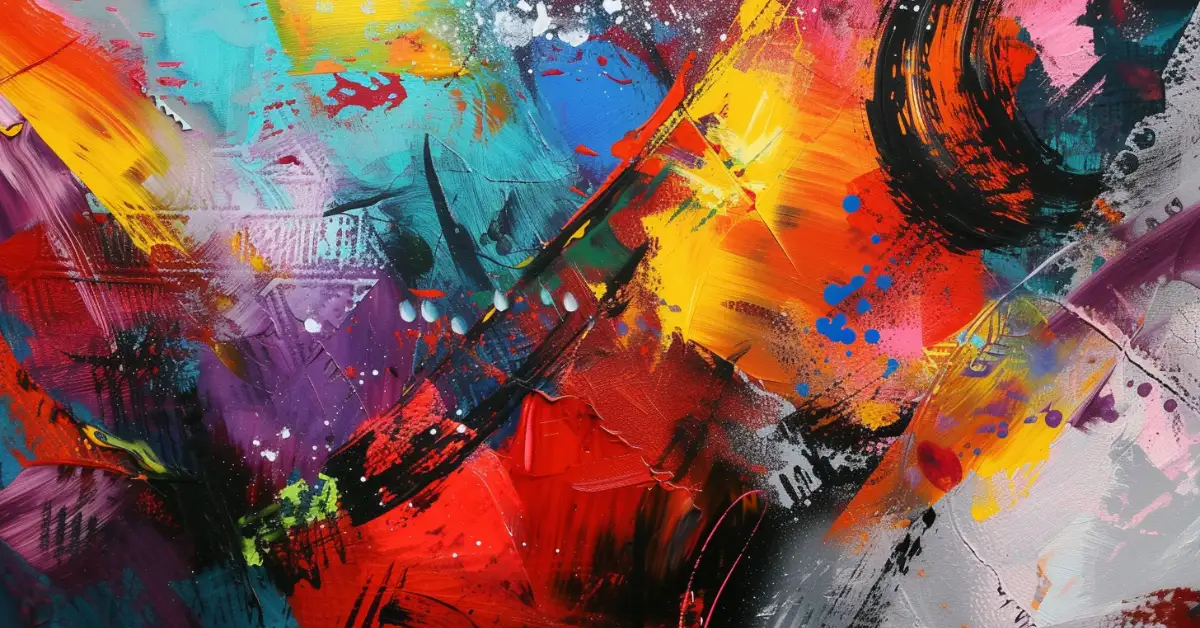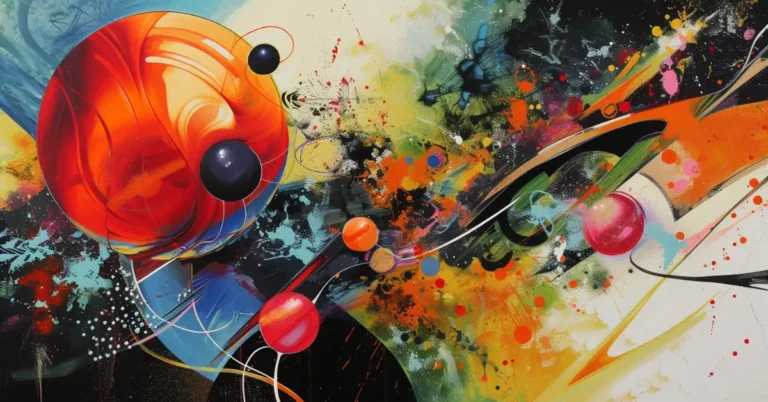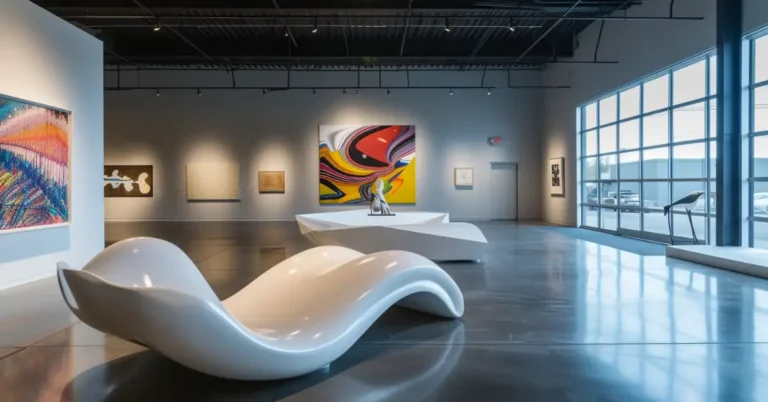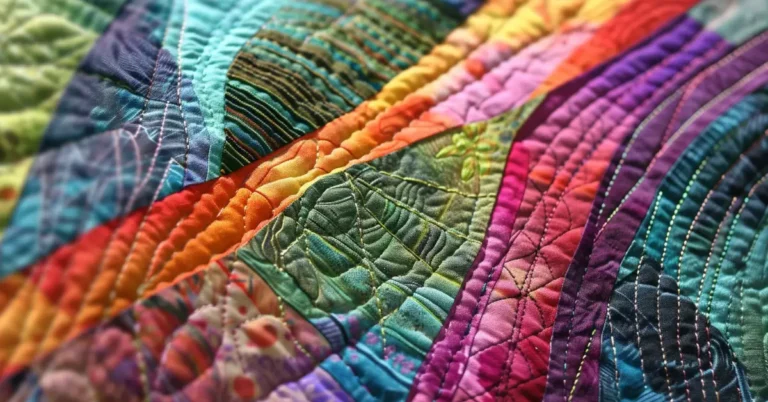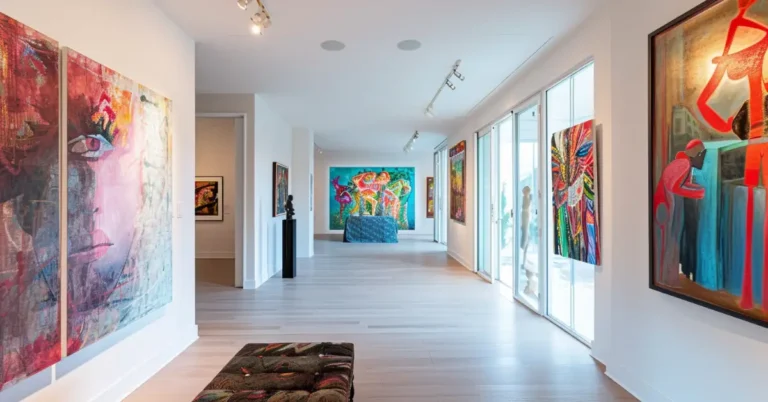Contemporary art styles are as diverse and dynamic as the eras that have shaped them. We’ve witnessed a kaleidoscope of artistic expressions that mirror the swift currents of change in our culture and society. At the heart of this vibrant art world lies contemporary art, a term that encapsulates the creative work produced in our lifetimes. It is a reflection of our times, articulating a language of color, form, and concept that speaks to the soul of our present day.
What are 12 Contemporary Art Styles
Pop Art
In exploring contemporary art styles, we can’t overlook the vibrant and impactful realm of Pop Art. This movement first burst onto the scene during the 1950s and quickly cemented itself as a defining style of the era, challenging traditional fine art by including imagery from popular culture.
Pop Art often employs bold colors and uses irony to critique cultural norms. Its most iconic pieces feature everyday objects and mass-produced items, mirroring society’s consumerism. Some renowned Pop Art works spotlight comic strips, soup cans, and celebrities, turning them into high art.
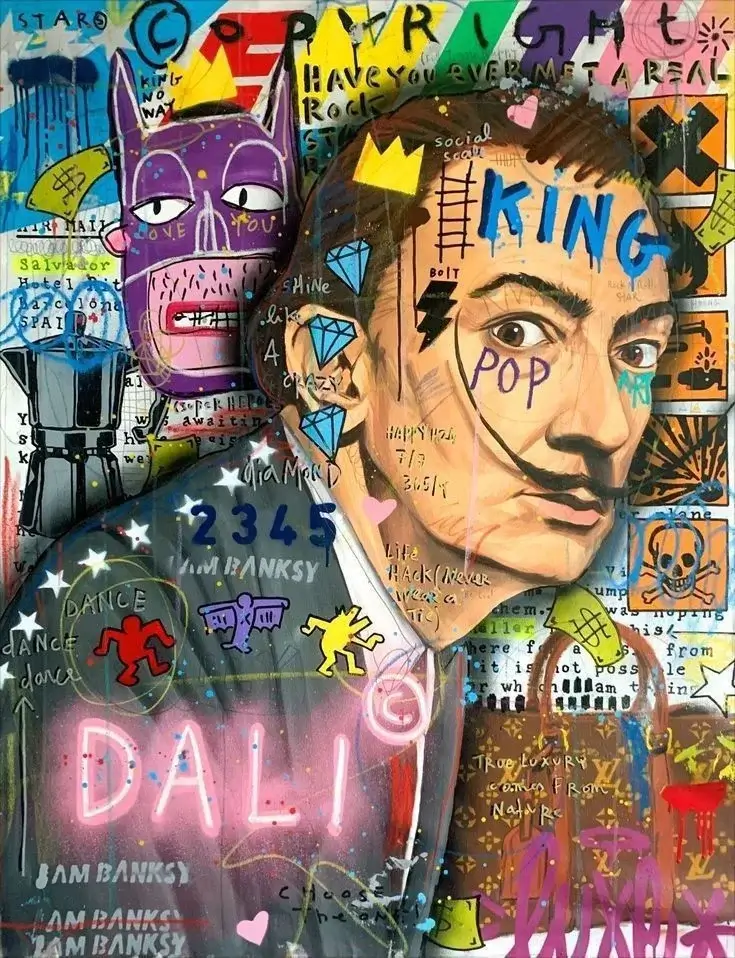
Key Elements:
- Use of mass media and consumer goods: Artists spotlight common items to make a statement
- Bold colors and vivid contrasts: A signature aesthetic that makes Pop Art stand out
- Iconic imagery: Celebrities and everyday products are transformed into art
Famous artists like Andy Warhol and Roy Lichtenstein brought Pop Art to the forefront. Their works are not only a reflection of the times but also a legacy that continues to influence artists even in today’s diverse swathe of contemporary art styles.
By drawing from mundane objects, Pop Art invites us to find the extraordinary in the ordinary, prompting a dialogue about the culture we consume and the nature of art itself. It’s a testament to the movement’s power and influence that it remains a dynamic and celebrated form of expression in the art world.
Minimalism
In the world of contemporary art styles, it’s easy to get lost in intricate details and complex narratives. However, Minimalism takes us on a different journey—one where less is more. Originating in the late 1950s, this style strips down art to its essentials, offering a serene break from the visual clutter of modern life.
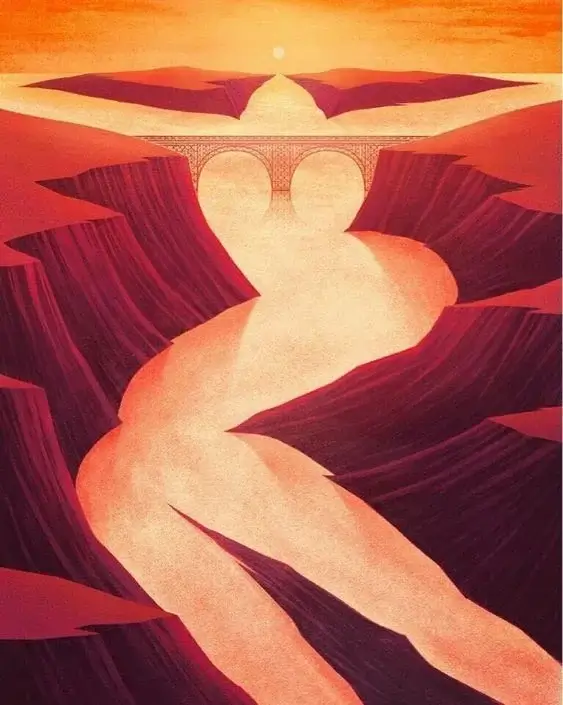
Key Features:
- Simplicity: Minimalist art is all about purity and simplicity. It focuses on the bare elements of an artwork, shunning any superfluous components
- Space: It often explores negative space, where the interaction of the artwork with its surrounding environment becomes a part of the piece itself
- Materials: Works in Minimalism frequently highlight the materials used, emphasizing their qualities without disguise
In our fast-paced era, Minimalism remains relevant. It encourages us to pause, reflect, and find beauty in simplicity. It’s not merely an art movement; it is a quiet but powerful communicator, speaking volumes through sparsity. Embracing this style can add a harmonious balance to our otherwise chaotic world.
By engaging with Minimalist art, we’re invited to appreciate the eloquence of clean lines, solid planes, and monochromatic palettes. It’s a testament to how powerful restraint can be—how the omission of complexity can lead to a profound experience. Minimalism reminds us that sometimes, in art and life, it’s the space between objects, the silence between sounds, that holds the most meaning.
Conceptual Art
When we explore the dynamic landscape of contemporary art styles, Conceptual Art invariably captures our attention. It’s a movement where the idea behind the work takes precedence over traditional aesthetic and material concerns. In Conceptual Art, the meaning is paramount, making the expression of the concept more significant than the physical creation.
Conceptual artists pushed boundaries beyond the tangible, opening doors to new conversations about what art could be. The art itself often exists as descriptions, instructions, or in the form of text, emphasizing that the conception of the work holds more value than the object.

Let’s look at a few key traits of Conceptual Art:
- Idea-Centric: The core concept of any piece is its most crucial element
- Minimalist Approach: Many works reduced their physical presence to almost nothing, challenging the viewer to engage with the idea over the object
- Interdisciplinary: Artists frequently incorporate other mediums and disciplines, reflecting a fluid approach to creation
Conceptual Art invites us to engage with art differently, urging a deeper understanding that extends beyond what we see. In the vast panorama of contemporary art styles, Conceptual Art stands out by transforming our interaction with art at its most fundamental level.
Photorealism
When we explore contemporary art styles, photorealism captures our imagination with its stunning attention to detail. It’s a testament to the meticulous skill of artists who bring photographs to life right before our eyes.
Originating in the late 1960s, photorealism was a counter-revolution to abstract expressionism. Artists used various techniques such as camera lenses and projectors, literally painting what the camera “saw.”

- Techniques: Artists would project photographs onto their canvases as a guide, capturing every minute detail
- Impact: This style highlighted the intersection between photography and painting, challenging our understanding of ‘reality’ in art
Photorealist artists have a sharp focus on details, often blurring the line between painting and high-resolution photography. From visual trickery with light and reflection to precise textural rendering, their works require a patient and steady hand.
Oscar Ukonu, a Nigerian artist known for his astounding photorealist images, creates his large-scale masterpieces using nothing but a ballpoint pen. His technique showcases the diversity within photorealism, expanding beyond traditional mediums.
With the digital age upon us, photorealism continues to evolve, standing out for its labor-intensive dedication to replicating the photographic image. It occupies a special niche in contemporary art, celebrating precision and challenging our perceptions with every piece.
Neo-Expressionismus
We’ve witnessed an array of contemporary art styles that have captivated the art world, but few have stirred as much excitement as Neo-Expressionism. It’s a style that rekindles the emotive power of painting, favoring the wild and instinctual over the reserved and conceptual. Emerging in the late 1970s, this movement served as a loud counterpoint to the minimalism that preceded it.
With its roots anchored in German Expressionism and Abstract Expressionism, Neo-Expressionism was a reaction, a bold declaration favoring raw emotion painted on canvases with rapid, visceral brushwork.

Characteristics:
- Expressive brushwork: Heavily textured, vigorous application
- Vivid color: Often employs strong, dramatic hues
- Figurative subject matter: Revival of recognizable imagery
- Emotional depth: Aimed to provoke a psychological response
Artists like Anselm Kiefer and Georg Baselitz became prominent figures, channeling their unique perspectives into works that could be stark, frenetic, or even confrontational. Their art was about more than just visuals; it was about storytelling with a brush charged with feeling.
By intertwining cultural narratives and personal histories, Neo-Expressionism carved out a place for itself in art’s sprawling narrative. It stood in direct opposition to the subdued whispers of the movements preluding it, opting instead for a scream into the canvas that resonated with many art enthusiasts and collectors of the time. It remains a testament to the enduring nature of expressive, figurative art within our diverse tapestry of contemporary art styles.
Fluxus
When we explore the vast landscape of contemporary art styles, our curiosity often leads us to Fluxus—a movement that challenges traditional art forms with a spirit of rebellion and innovation. Originating in the 1960s, this movement saw a collective of artists who prized the creative process above all.
Fluxus was more than art—it was a way of life. Embracing simplicity and the element of chance, Fluxus artists broke down boundaries between life and art, incorporating humor and minimalism in their works. They utilized a diverse array of materials, often found objects, emphasizing the ephemeral and transient nature of art. We find the essence of Fluxus in performative events known as ‘Happenings’, which were as much about audience engagement as the performance itself.
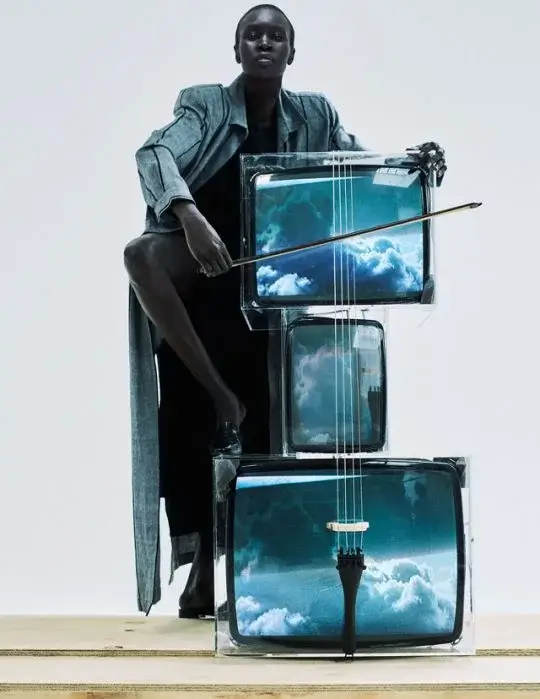
Key aspects:
- Interdisciplinary: Fluxus artists came from various backgrounds, including poetry, music, and design
- International: The community was not bound by geography, encompassing members from different countries
- Experimental: Art performances were often the vehicle for their artistic expressions
We can’t discuss Fluxus without mentioning its influential figures, like George Maciunas, who coined the term Fluxus to capture the fluidity of their approach. Fluxus was indeed avant-garde, reshaping our understanding of artistic practices. The movement’s heart lay in its open-mindedness—a true spirit of Fluxus allows creativity to flow unrestricted.
Installation Art
When we think about contemporary art styles, installation art immediately stands out as a uniquely transformative experience. It’s an art form where the room becomes part of the canvas, and we, the viewers, get enveloped in the artist’s vision.
Installation art engages us in a way that’s quite different from traditional paintings or sculptures. It’s not just about looking at an art piece; it’s about being a part of it. As we step into an installation, the room changes around us—each angle offers a new perspective, and every material used brings a different texture and emotion to the encounter.
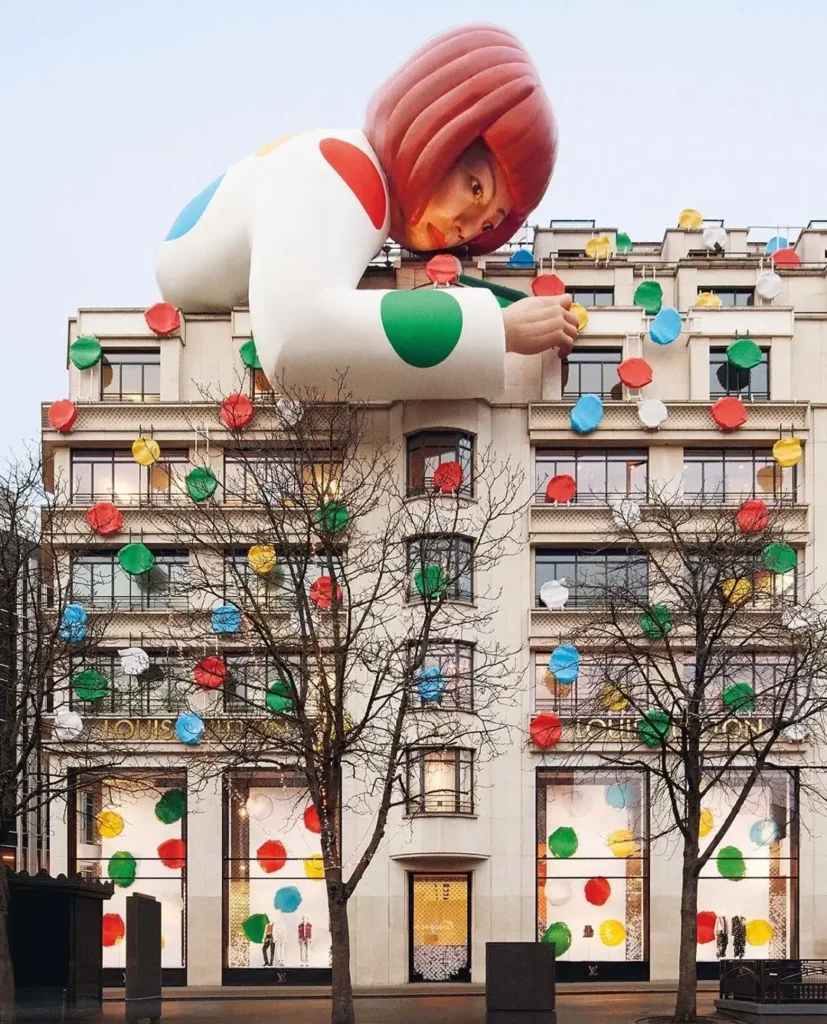
IG: kusama_archive
Here are a few key elements that make installation art a standout in contemporary art styles:
- Materials: A mix of conventional and unconventional, from found objects to digital projections
- Space: Often site-specific, utilizing the location to shape the work’s meaning
In a nutshell, installation art is an immersive, innovative, and often interactive form of art that has become integral to contemporary art. It doesn’t just hang on the wall or sit on a pedestal—it surrounds you, changing your perception of space and sometimes even challenging your worldview.
Digital and Video Art
We’ve seen the art world undergo remarkable transformations, and contemporary art styles are no exception. They have vastly expanded with the advent of digital technology, leading to the emergence of digital and video art forms that resonate with the tech-savvy generation.
Digital Art leaps beyond the confines of traditional canvases, incorporating cutting-edge software to craft visuals that were once the realm of imagination. It utilizes various techniques, such as 2D digital painting and 3D modeling, each presenting unique textural qualities and dimensions Types of Digital Art. Artists can now manipulate images to create not just flat pictures but entire worlds in the digital space. Additionally, Vector Painting plays a pivotal role, employing algorithms and geometrical formulas to output scalable and quality-consistent artwork Digital Art Formulas.
In parallel, Video Art amplifies artists’ capability to tell stories and express ideas. It’s multi-sensory, and often immersive, pulling viewers into a curated experience. This medium also chronicles history, with pioneers like Vostell utilizing televisions to challenge and redefine public perception as early as 1958 Video Art History. Today’s artists continue to expand on this legacy, capturing life in dynamic ways that static mediums never could Video Art Today.
Sculpture
In the vibrant landscape of contemporary art styles, sculpture stands out as a dynamic and multidimensional mode of expression. We often find ourselves captivated by the sheer ingenuity and tactile sensibility that sculptors bring into space. Unlike the flat canvas of painters, sculptors engage us with forms we can walk around and view from multiple angles, adding a layer of interaction to the viewing experience.
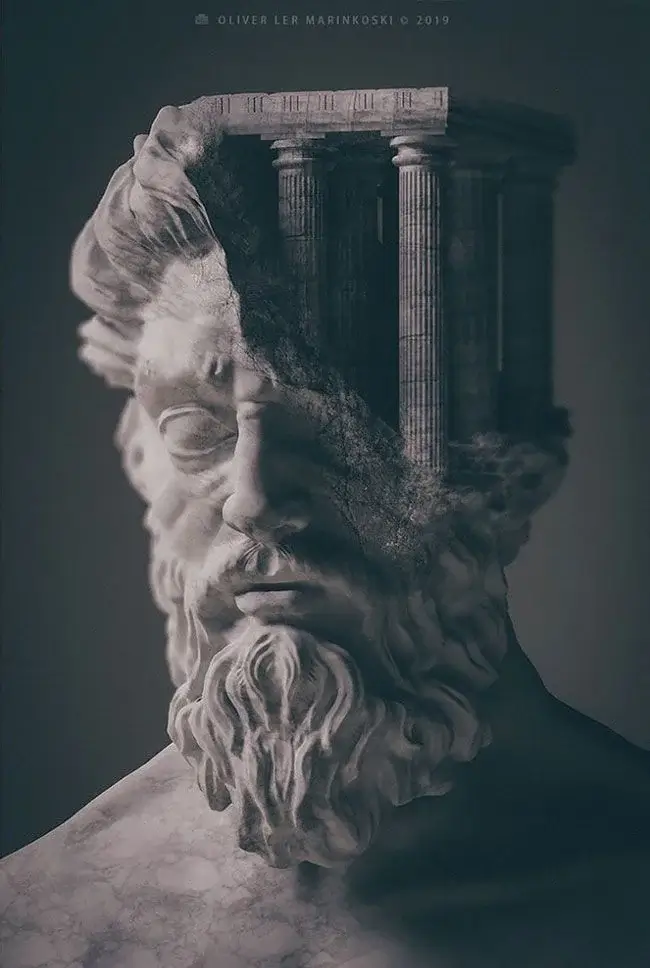
Contemporary sculpture has eagerly embraced a variety of materials, from traditional bronze and stone to unconventional items like found objects and industrial products. Here’s a snapshot of the diversity in materials:
- Stone and Marble: Time-honored and enduring
- Metals (bronze, steel, aluminum): For strength and flexibility
- Wood: Organic warmth and versatility
- Plastics and Resins: Modern and malleable
- Mixed Media: Creating layered narratives
Sculptors of today are not just makers; they are thinkers and innovators. It’s exhilarating to witness how these artists manipulate materials to communicate powerful ideas or evoke emotions. Through sculpture, we see an opening up of boundaries—a trait inherent to contemporary art—where art is not confined by traditional expectations but is a playground for experimentation.
While we might be tempted to define contemporary sculpture by the era it belongs to, it’s the artists’ exploration and application that truly shapes this facet of contemporary art. From the imposing physicality of Richard Serra’s steel curve to the delicate subtlety of a Martin Puryear wood construct, each piece tells a story unique to its creator.
Earth Art/ Land Art
We’ve witnessed a tremendous array of contemporary art styles emerge over the years, but few engage with our natural environment as thoughtfully as Earth Art, also known as Land Art. Born out of the 1960s and the 1970s, this movement intertwines art with the landscape in a way that challenges our perception of art’s place in the world.
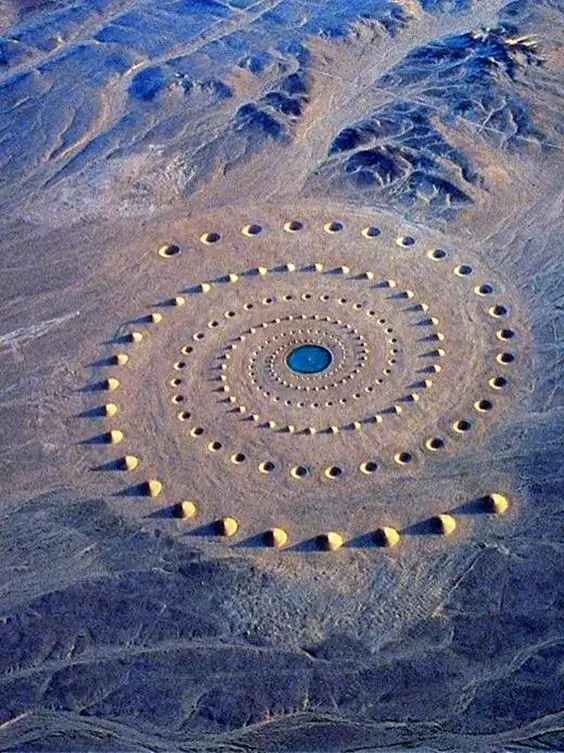
- Origins: Often rooted in environmentalism, it’s a response to the growing alienation from the natural world. Artists ventured outside the confinement of traditional galleries, utilizing the earth itself as their canvas
- Materials: Common materials include rocks, soil, vegetation, and water, sculpted into massive outdoor pieces that often require an aerial view to be fully appreciated
This art form insists on an awareness of the larger ecological system and humanity’s impact upon it. Embedding the work directly into the terrain, highlights the impermanent and mutable nature of art, just as ecosystems are subject to change.
For example, at the 59th Venice Biennale, a new generation of artists presented Earth Art within the gallery context, showcasing a resurgence in this style and underlining its lasting relevance.
Abstract Expressionism
As we explore the landscape of contemporary art styles, it’s clear that Abstract Expressionism holds a unique place in our hearts. Originating in the 1940s and 1950s in America, this movement signified a pivotal moment in art history.
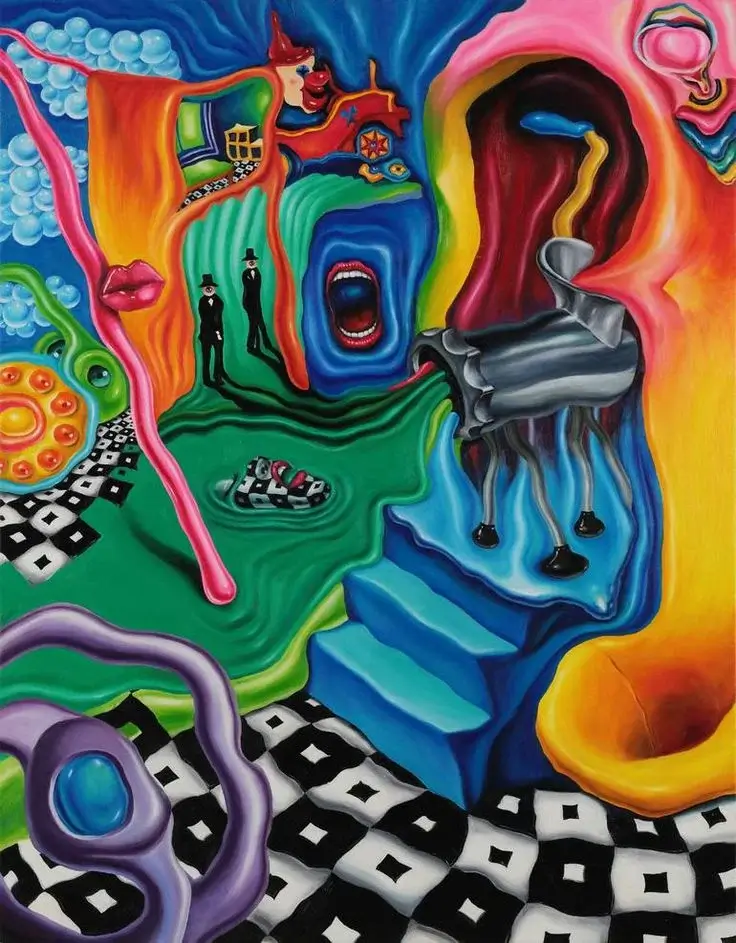
Key Characteristics:
- Emphasis on spontaneous or subconscious creation
- Expressive use of paint leading to abstract artworks
- Works often feature bold colors and dynamic brushstrokes
Abstract Expressionism emerged post-World War II, giving voice to an American art scene that was ready to command the global stage. Individuality and freedom of technique were championed, allowing artists to communicate raw emotional states through their canvases. Our understanding of this movement is enriched by knowing some of the leading figures and their masterpieces.
Jackson Pollock, for instance, captivated the imagination with his drip paintings. They represent a fearless departure from traditional form and composition, inviting us into a tangled web of emotion and energy.
Moving on, Mark Rothko’s color field paintings, with their vast expanses of color, speak to a more meditative, soul-stirring experience. Each piece invites us into a contemplative space reflecting Rothko’s belief that art is a profound form of human communication.
Geometric
When we explore contemporary art styles, there’s one stream that seamlessly blends mathematics with aesthetics: Geometric. This style is characterized by its emphasis on simplicity and symmetry, often using shapes like squares, triangles, and circles to create abstract visions that speak volumes.
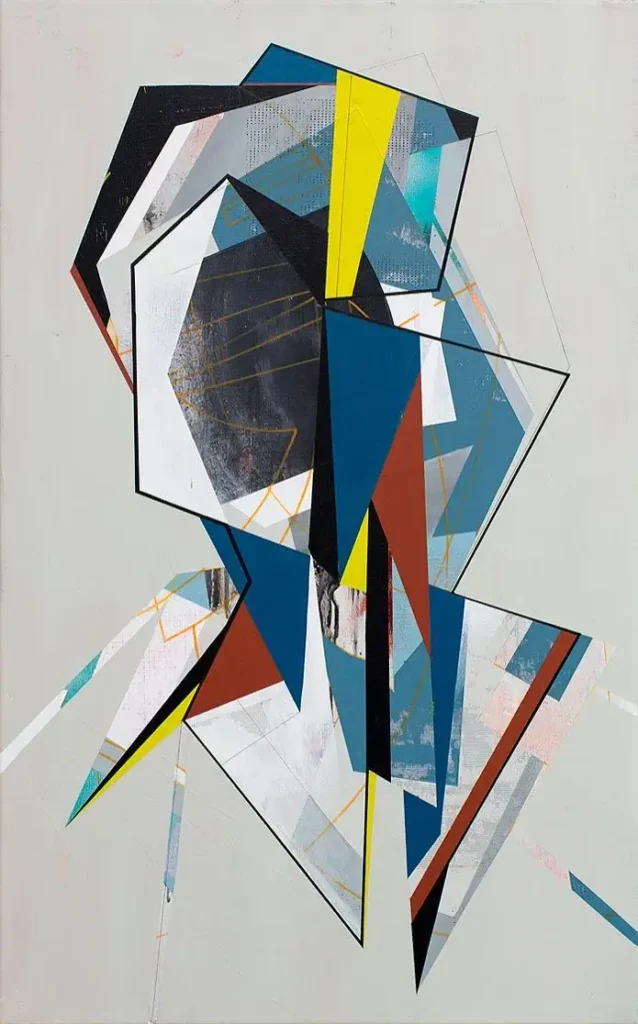
- Origins: Tracing back to early 20th-century movements like Cubism
- Key Features: Use of clean lines and often a monochromatic color palette
In our observation of geometric art, we find a refreshing clarity. These pieces captivate us with their precise boundaries and order. It’s not just about the shapes themselves, but the space between them. The balance and tension these artists create are intrinsic to the style’s allure.
Artists who have shaped this style take pride in its ability to transcend reality. Incorporating geometric forms, they don’t just create artwork; they craft experiences that invite us to see the world through a different lens.
Kazimir Malevich introduced suprematism, focusing on geometric shapes and pure colors. Frank Stella utilized minimalism to create large-scale geometric paintings. Bridget Riley experimented with optical illusions and movement in her geometric artwork. Sol LeWitt developed the concept of conceptual art using geometric forms and lines. Ellsworth Kelly explored the relationship between shape, color and space in his geometric paintings.
FAQ
What is the most famous contemporary art piece?<div jsname="Q8Kwad" class="aj35ze" style="background-image: url("data:image/svg+xml,<svg focusable=\"false\" xmlns=\"http://www.w3.org/2000/svg\" viewBox=\"0 0 24 24\"><path fill=\"%2370757a\" d=\"M16.59 8.59L12 13.17 7.41 8.59 6 10l6 6 6-6z\"></path>
Determining the “most famous” contemporary art piece is subjective, but Jeff Koons’ “Puppy,” installed in Bilbao, Spain, is among the most recognized.
Who is the most famous contemporary artist today?
Determining the “most famous” contemporary artist is subjective, but names like David Hockney and Yayoi Kusama are often highlighted for their influence and recognition.
What is the most expensive art piece?
The most expensive art piece sold is Leonardo da Vinci’s Salvator Mundi, which fetched approximately $450.3 million.
Who is the hottest painter right now?
The term “hottest” painter can be subjective, but according to TRiCERA ART CLiP, one of the painters who is hot right now is Jean-Michel Basquiat.

